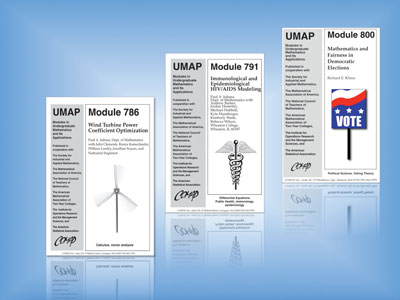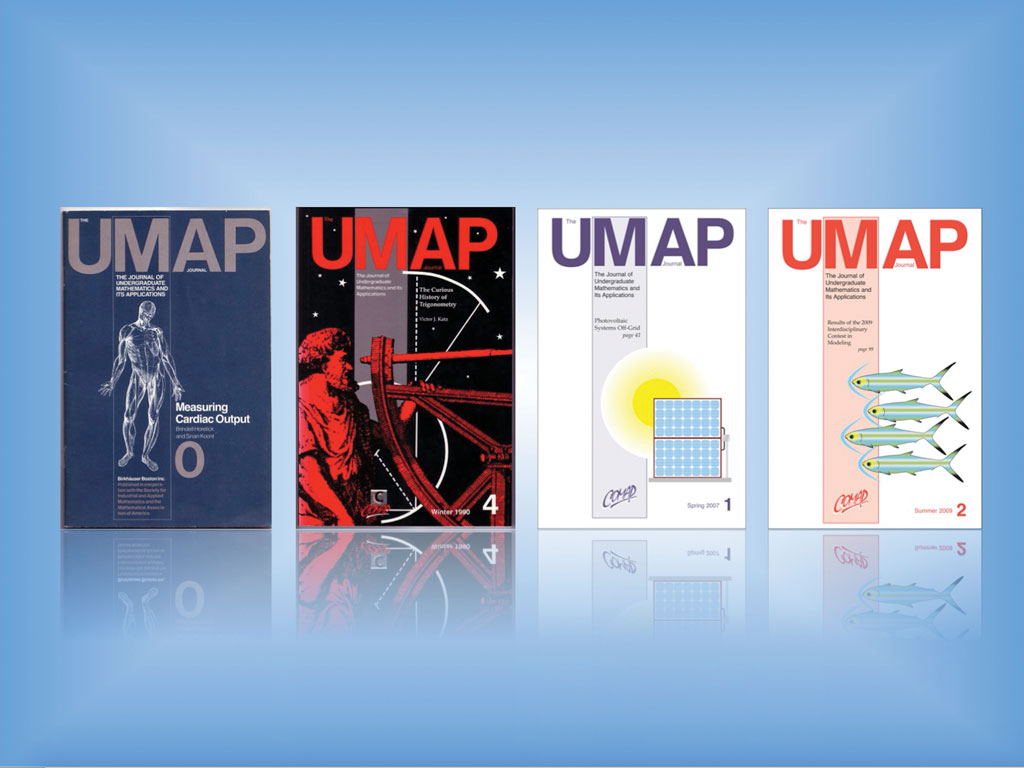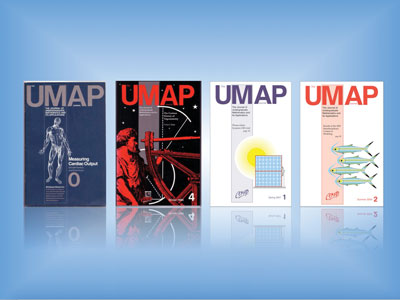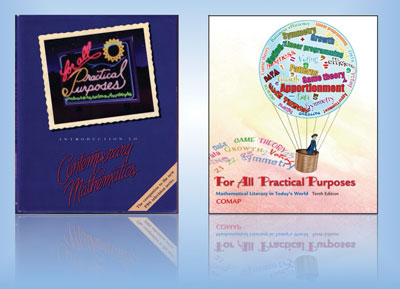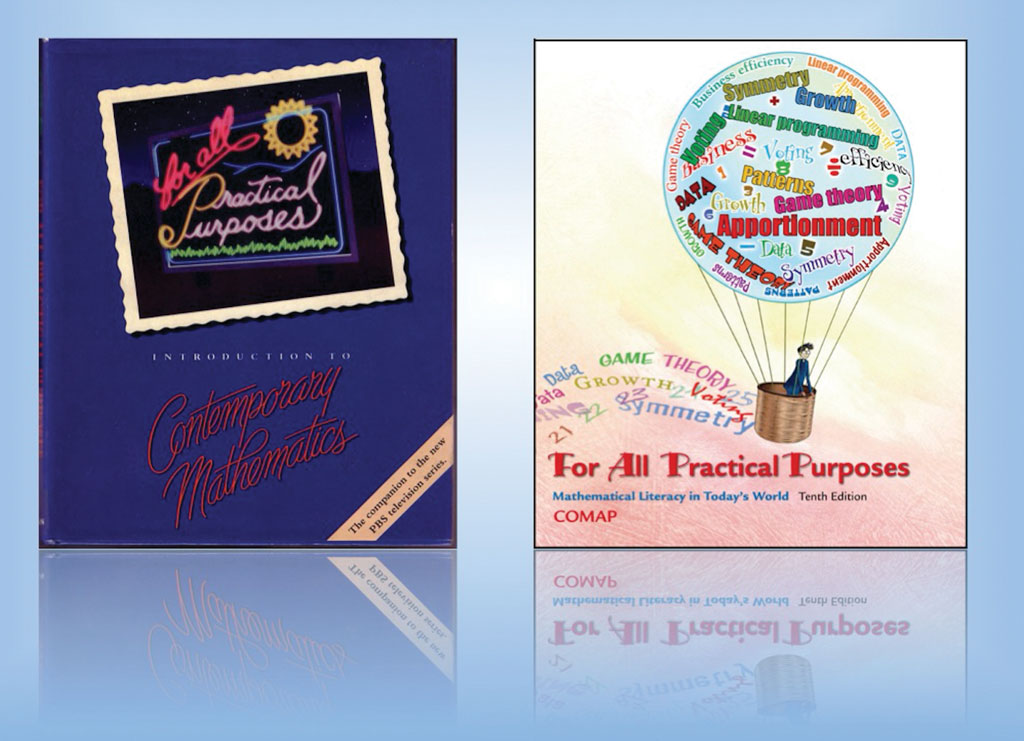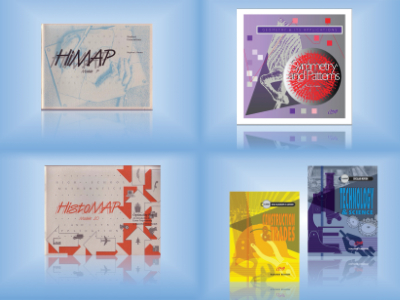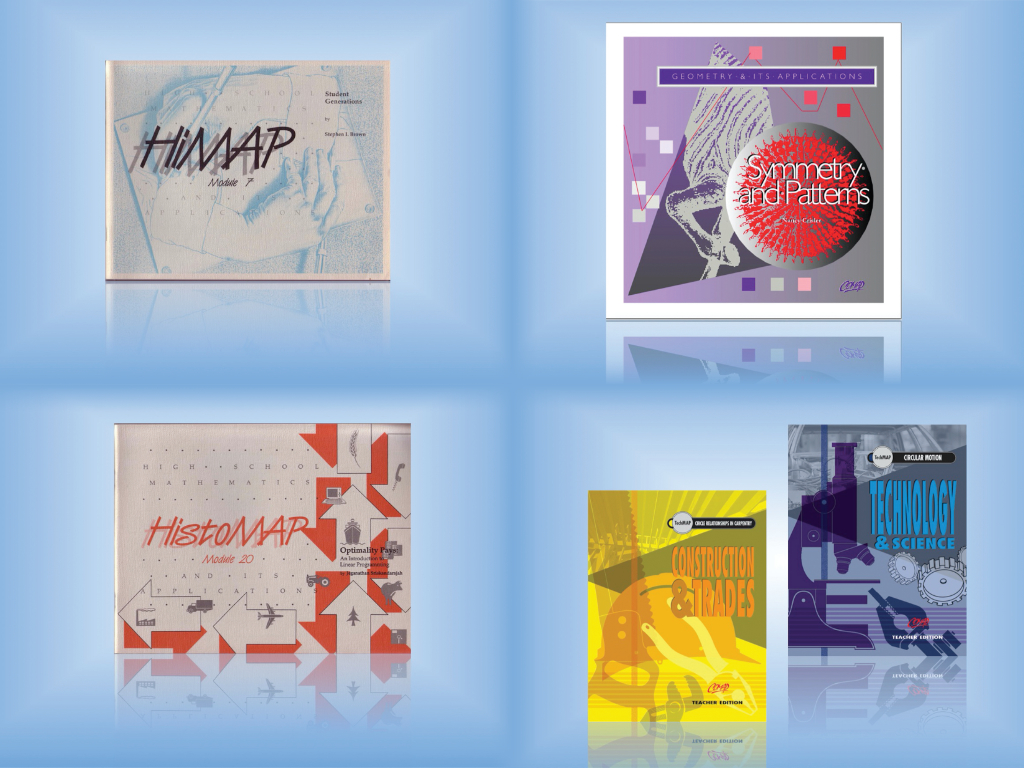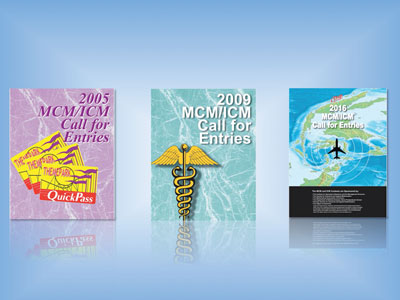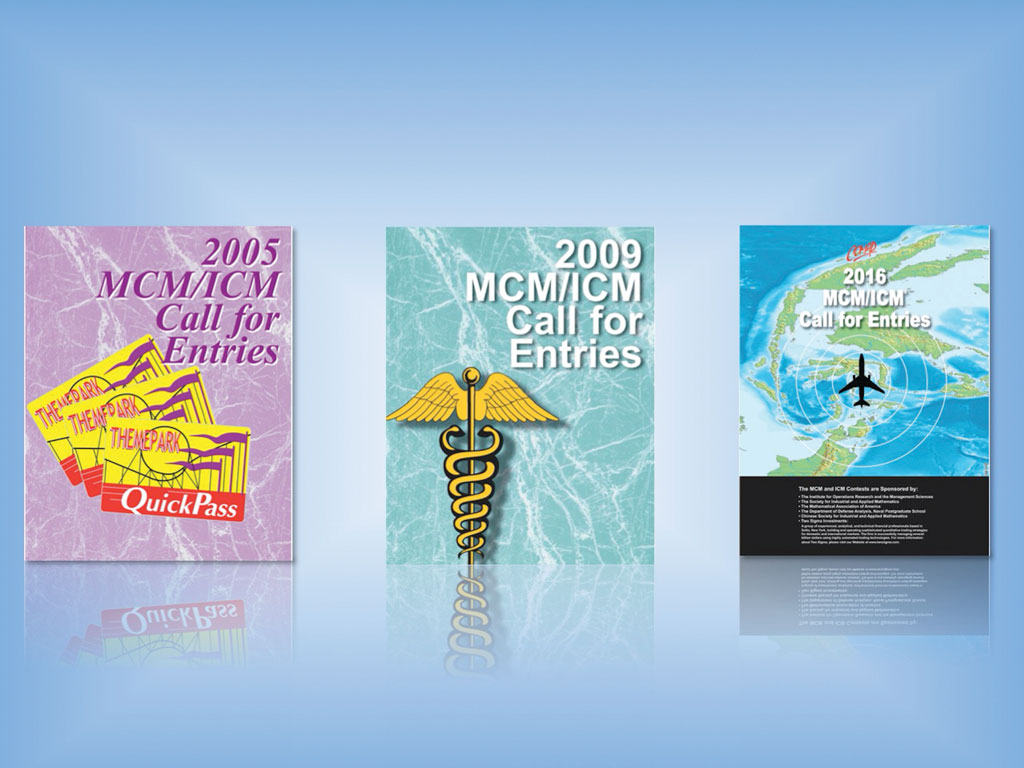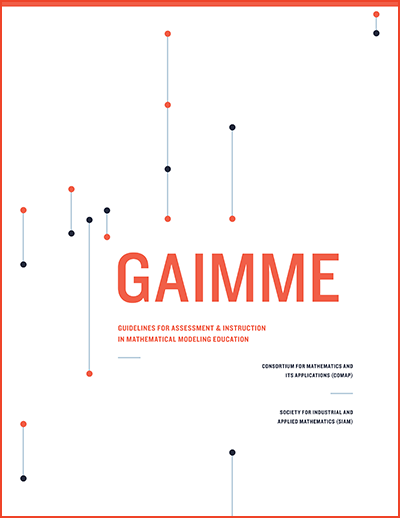The UMAP proposal was unique in a number of ways. It called for the creation of single lesson modules that taught some aspect of undergraduate mathematics through applications and modeling (Figure 1). These modules were to be produced through a user/developer network of practicing college faculty. Moreover, they were to be peer-reviewed and field-tested before publication. One of the most important observations we made was that there was no end to the various applications we could discuss and new applications would be discovered – so that we needed a program which could continue over time, in particular past the period of federal support.
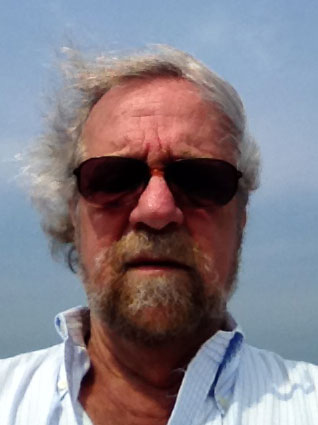
Lifetime Achievement Award 2015 Address
Sol Garfunkel
Consortium for Mathematics and its Applications
Abstract
iThis article is taken from Dr. Garfunkel’s talk at the 2016 ISDDE Conference in recognition of his ISDDE Lifetime Achievement Award. It consists of a tour through U.S. mathematics education reform over the past 40 years, highlighting the major trends, in particular with regard to advances and setbacks in the teaching of mathematics through modeling and applications
Before I begin my talk, I want to express my sincere gratitude to the ISDDE members for your gracious and generous lifetime achievement award. I cannot begin to tell you how much this has meant to me. Through much of my career I have been an outlier – someone difficult to characterize, working for the most part on the fringes of academic respectability. But I have to say that in many ways I am the luckiest of men. My career path has paralleled the trends of the times and I have been carried along with them.
To begin, I entered graduate school in the mid-60s. In the U.S. this was still in the post-Sputnik spending spree. Graduate school in mathematics provided me with an exemption from the draft and possible service in Vietnam. When I went to the University of Wisconsin, money was abundant and it was easy to get teaching and research assistantships which more than paid for everything I needed. When I left graduate school in 1967 with a newly minted Ph.D. in mathematical logic there were jobs aplenty. Three years later I would have been fortunate to find a post-doc. Cornell offered me a prestigious two-year position which I was happy to accept.
On my first day at Cornell the chair of the department, Alex Rosenberg, called me into his office for a chat. Paraphrasing his message – “Sol. I hope you are a good teacher, we believe in good teaching. But if you think that anything you do in class will have any bearing on your eventually achieving tenure here, you are sadly mistaken. I am not saying that this is how I think things should be – but this is how things are. So if you ever have to make a choice between working on some research or preparing for a class, and what you care about is staying here, then work on the research.”
I was devastated. I was 24 years old and incredibly idealistic. This was the 60s after all. That night I went home and wrote a letter to the then Secretary of Health Education and Welfare, John Gardner explaining what I had just learned. And, amazingly, he wrote back! In addition to a long reading list he gave me some simple advice – work hard, get tenure at an established university and work to change the system from within. And in many ways that is what I have tried to do.
After leaving Cornell I got a tenure track position at UCONN. I had a good friend who was working at the Education Research Center at M.I.T. that was founded by Gerald Zacharias a physicist who got very interested in education, who was responsible for PSSC Physics. There were a number of people there working on math curriculum development – of an applications and modeling flavor. This was brave new world for me, as I was this logician working quite far from the real world of bubble accelerometers and wine making kits.
But I was hooked. I started coming up one day a week working on turning some of these ideas into a calculus curriculum. And I brought many of the ideas back into my classrooms along with educational innovations popular at the time – like mastery learning. Then two things happened to affect my career. First UCONN was not happy with my new interests. They had after all thought they were hiring a research logician and they were getting a budding math educator. Secondly, I was getting more and more involved in the project work at ERC. There is a tale – The project I was working on at MIT, Project CALC, was funded by the National Science Foundation (NSF). The senior staff were exclusively physicists. As this was the major math education project funded by NSF, it caused quite a bit of sturm und drung in the math community. I remember a site visit by an NSF program officer at which he actually said, “Can’t you find someone with math credentials to work on this thing?” And Zach turned and said, “What about that kid who comes up here once a week?” And from then on I was paid the princely sum of $100 a week for the visits I was making for free. True story.
Undergraduate Mathematics and its Applications (UMAP)
iiWell, I got tenure at UCONN after a massive fight and I continued to consult at ERC, which in the meantime morphed into EDC (the Education Development Center). And as time went on I became more involved in the creation of ideas, leading to proposals, which led to funding. The mid-to-late 70s were years of heavy government investment in math and science education. In 1976 I helped write the UMAP proposal (Undergraduate Mathematics and its Applications). I should mention that at the time almost all U.S. government investment in math and science education was at the undergraduate and graduate levels, as there was a fear of direct federal involvement in K-12 education.
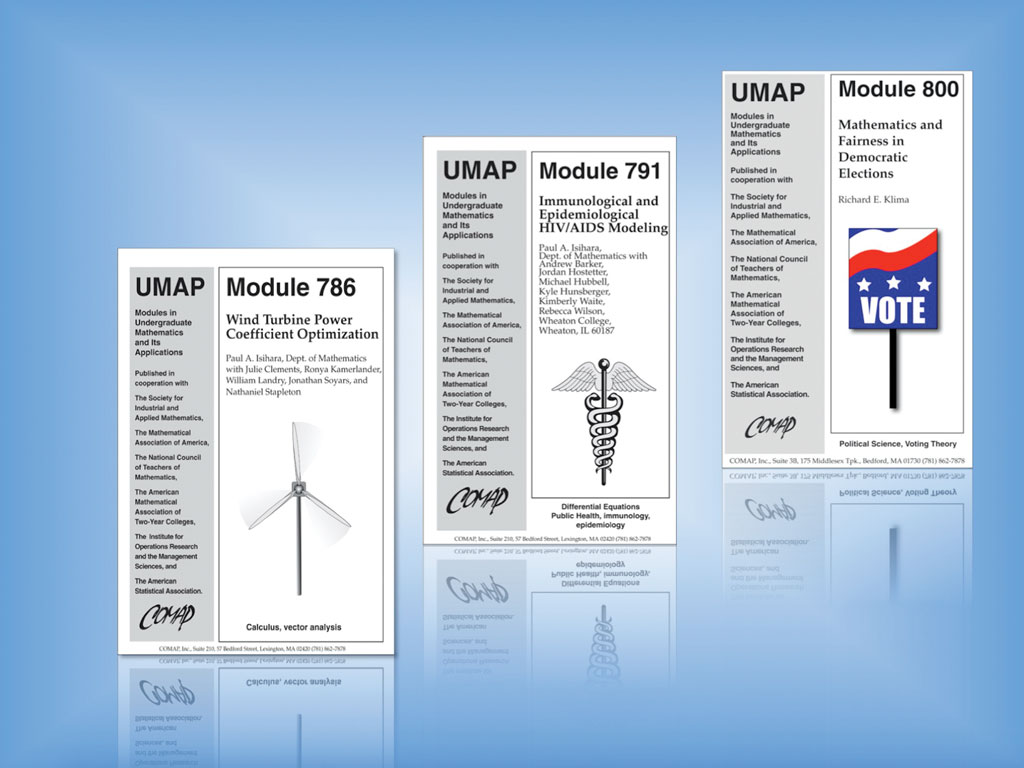 www.comap.com/search.cgi?product_type_2=1&level_4=1&words=umap%20module&page=1&sort=relevance
www.comap.com/search.cgi?product_type_2=1&level_4=1&words=umap%20module&page=1&sort=relevance
In order to make that happen we did two things. First we created the UMAP Journal – a peer reviewed publication which in addition to articles about teaching mathematics through applications contained the actual student modules. We tried to emulate a research journal. In particular, no one got paid except me. Authors and reviewers did their work as part of their professional lives, because we understood that without that there was no way this effort could continue. And we established COMAP as a not-for-profit organization that in theory could continue this work when NSF funding ended. The first issue of the Journal was published in 1979. Here we are in its 37th year. Still going strong. As we here are all about design, let me show some sample module covers and pictures of the UMAP Journal through the years (Figure 2).
For All Practical Purposes (FAPP)
iiiSome politics. In 1980 Ronald Reagan was elected. The NSF education budget was immediately cut to zero, under the argument that we had spent a lot of money on STEM education and students were still not doing very well, therefore money doesn’t help solve the problems. But there was for me and for COMAP an ironic twist of fate. In 1981 Walter Annenberg, a very close friend of Reagan, came back from a stint as ambassador to Britain. While there he became enamored with the British Open University and attempted to create a version in the U.S. He donated million to the Corporation for Public Broadcasting to create state of the art television courses. These were to be 26 half-hour programs aired on public television at odd hours of the evening.
At any rate, just as the UMAP grant was running on fumes we put in a successful proposal for a Mathematics for Liberal Arts tele-course – and it was funded. This was a personal watershed moment for me as well as for COMAP. Having taken a sabbatical and three consecutive years without pay, I left my tenured position at UCONN and in 1983 we moved from the comfort of the EDC nest out on our own. I should mention that since For All Practical Purposes (FAPP) had zero overlap with the standard math for liberal arts courses of the time, we also created a textbook to accompany the video material (Figure 3). I should back up here. In order to determine the content of this course, I wrote a letter to some 50 mathematics educators which said – “we know that the average college student takes one semester of mathematics. If you knew you had a student for only that one semester and they would not take a math course again, what would you teach?” The table of contents of FAPP was pretty much the intersection of the responses. Lucky again, the text became an immediate best seller and is now in its 10th edition having been used by well over a million students.
Back to politics. In 1983 two major reports came out in the United States – A Nation at Risk and the David Report. Both reports said essentially the same thing – U.S. undergraduate and graduate education are the envy of the world, but K-12 is in huge trouble, send money. And send money Congress and the Reagan administration did. But unlike what had happened in the past, the money was earmarked for elementary and secondary education. Well, if there was a need for applications and modeling at the university level, certainly that need existed at the high school level. And so, in quick succession came the HiMap project, the GeoMap project, the HistoMap project, the TechMap project and the WorkMap project, all creating modules for teachers and for students. And in these halcyon days we created two more tele-courses for Annenberg/CPB namely Against All Odds: An Introduction to the Practice of Statistics and In Simplest Terms, a college algebra course.
Mathematics: Modeling Our World
ivThen came 1989 and everything changed. The National Council of Teachers of Mathematics came out with their Curriculum and Evaluation Standards for School Mathematics. These standards laid out a vision for curriculum reform which emphasized among other things reasoning, communication, technology and applications. It said that mathematics was for ALL. Mathematics education was at its heart not about the education of mathematicians, but the mathematics education of all students. Believe it or not at the time this really was a radical position to take, and it put a clear focus on curriculum development. Not long after NSF took note and in the early 90s put out a request for proposals to create comprehensive mathematics curricula at the elementary, middle and high school levels.
No more small modules for teachers to insert where they would. This was to be entire curricula that embodied the spirit of the new Standards. Not surprisingly COMAP wrote a high school proposal and somewhat surprisingly, we were successful. In five exhausting years we produced Mathematics: Modeling Our World. It was by far our largest effort, roughly million over 5 years and involved a team of some 40 mathematicians, including a team from the Freudenthal Institute which worked on the course assessments. The curriculum was published in four text books. While never a commercial success they were, in my opinion, an existence proof. We showed that a secondary school curriculum could be designed to be contextual with modeling as the driving force. And the texts in new editions are still in use, published now by COMAP.
From an historical perspective, I should make mention of the ‘Math Wars’. While the NCTM Standards were endorsed by all of the major mathematical societies when they were produced, the truth is that most of the research community paid little attention until the texts were published and in general use. Then there was a rather obsessive backlash by those who felt (and still feel) that in attempting to reach all students the new reform materials were handicapping the mathematically talented. The ensuing fight got quite ugly especially at the high school level. In consequence if we look today at the market penetration of reform books at the various levels we see that at Elementary School it is over 50%, at Middle School it is around 30% and at High School somewhat under 6%.
The Mathematical Contest in Modeling (MCM)
vNow a funny thing happened to COMAP starting in 1985 while all of the curriculum development efforts were going on. With a small three-year grant from the Department of Education we began the Mathematical Contest in Modeling (MCM). This is a team competition at the undergraduate level. Teams of three students work on an open ended modeling problem over a four-day period. And they are able to use any and all inanimate resources to do their work. In the first year of the contest we had 90 teams from 70 U.S. colleges participate. I should state that the purpose of the contest was never intended simply to reward bright students. The avowed purpose was to increase the teaching of modeling and applications within math departments in order to create real educational change. And it is fair to say that it worked – although not always in ways we expected.
Back to the politics. The math wars did a great deal of damage. Funders, especially the government don’t like ‘messy’ – and the math wars were messy. NCTM became quite defensive as you can see by looking at their Standards revision published in 2000, where they took a step back from the 1989 document. And curriculum development became something of a dirty word at NSF with fewer dollars available. You heard more of ‘research’ rather than ‘development’. The attitude was one where we were to find out what works before investing in making it. Almost a ‘curriculum doesn’t matter’ view prevailed. Hugh Burkhardt has often said that mathematics education is much more of a D&R endeavor than R&D, but this has definitely not been the government position in these last 15 years.
So, here COMAP was – a curriculum development house where no one wanted to fund curriculum development. What to do? Well remember that funny little contest? Well it turns out that it was discovered by the Chinese. Somewhere in the early 2000s Chinese teams began entering the MCM, gradually at first. But there are a lot of people in China and mathematical modeling became almost a government sanctioned activity – at least it was encouraged. Since that time the growth has been exponential with registrations growing at approximately 30% a year, as the chart shows. And so at least in financial terms we are much more in the contest business than the curriculum development business.
Advocacy
viBut as our development activities have slowed, our advocacy activities have increased. In 2015 we teamed with SIAM to produce the GAIMME report Guidelines for the assessment and Instruction in Mathematical Modeling Education . This is an acknowledged rip-off of the title of the American Statistical Association’s excellent GAISE report. GAIMME is free for download both at the COMAP and SIAM websites. As the Preface states:
“A major reason for the creation of GAIMME was the fact that, despite the usefulness and value in demonstrating how mathematics can help analyze and guide decision making for real world messy problems, many people have limited experience with math modeling. We wanted to paint a clearer picture of mathematical modeling (what it is and what it isn’t) as a process and how the teaching of that process can mature as students move through the grade bands, independent of the mathematical knowledge they may bring to bear.”
It is our sincere hope that this report will serve as a stimulus to new curriculum development efforts here and abroad. In case you are wondering, the Chinese version is in production.
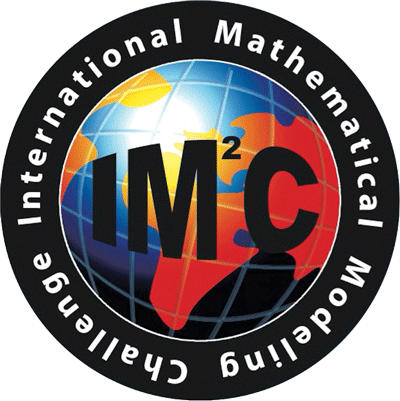
One last report. MCM has been so successful at the university level that we instituted almost 20 years ago a high school contest HiMCM. There are a smattering of such contests around the world. But we believe that a more high profile competition along the lines of the International Math Olympiad would have a stronger chance of influencing school curricula. And so, in 2015 we instituted the IMMC – the International Mathematical Modeling Challenge. In this contest each participating country is permitted to field up to 2 teams. Teams are given up to 5 consecutive days (chosen from a 2 month period) to work on their solutions. In the first year of the challenge we received 17 papers from 10 countries. This year there were 40 entries from 23 countries. Winning teams presented at ICME in Hamburg. Henk van der Rooij is a member of the IMMC Organizing Committee and his work has been invaluable in helping to recruit participants.
I should end by saying that there are two hopeful trends. First it is clear that mathematical modeling and applications are more in vogue than ever, and curriculum development is making a comeback, especially in the United States. COMAP has a few new projects in the works. I have often said that I am a prime example of the fact that some people can have ideas that are better than they are. COMAP is a prime example. And as my career and your generous award show – I am indeed the luckiest of men. Thank you.
List of Resources
viiUndergraduate Mathematics and its Applications (UMAP)
http://www.comap.com/search.cgi?product_type_2=1&level_4=1&words=umap%20module&page=1&sort=relevance
For All Practical Purposes
http://www.macmillanlearning.com/Catalog/product/forallpracticalpurposes-tenthedition-comap
About the Author
viiiSol Garfunkel is the Executive Director of the Consortium for Mathematics and its Applications and has dedicated the last 40 years to research and development efforts in mathematics education. Dr. Garfunkel has been on the mathematics faculty of Cornell University and the University of Connecticut at Storrs. He has served as project director for several National Science Foundation curriculum projects. Dr. Garfunkel was the project director and host for the television series "For All Practical Purposes: Introduction to Contemporary Mathematics." He is a member of the 2012 Mathematics Expert Group of PISA and he was the Glenn Gilbert National Leadership Award Recipient for 2009 from the National Council of Supervisors of Mathematics.
In 2015, Sol Garfunkel was awarded the ISDDE prize for Lifetime Achievement in Educational Design.
